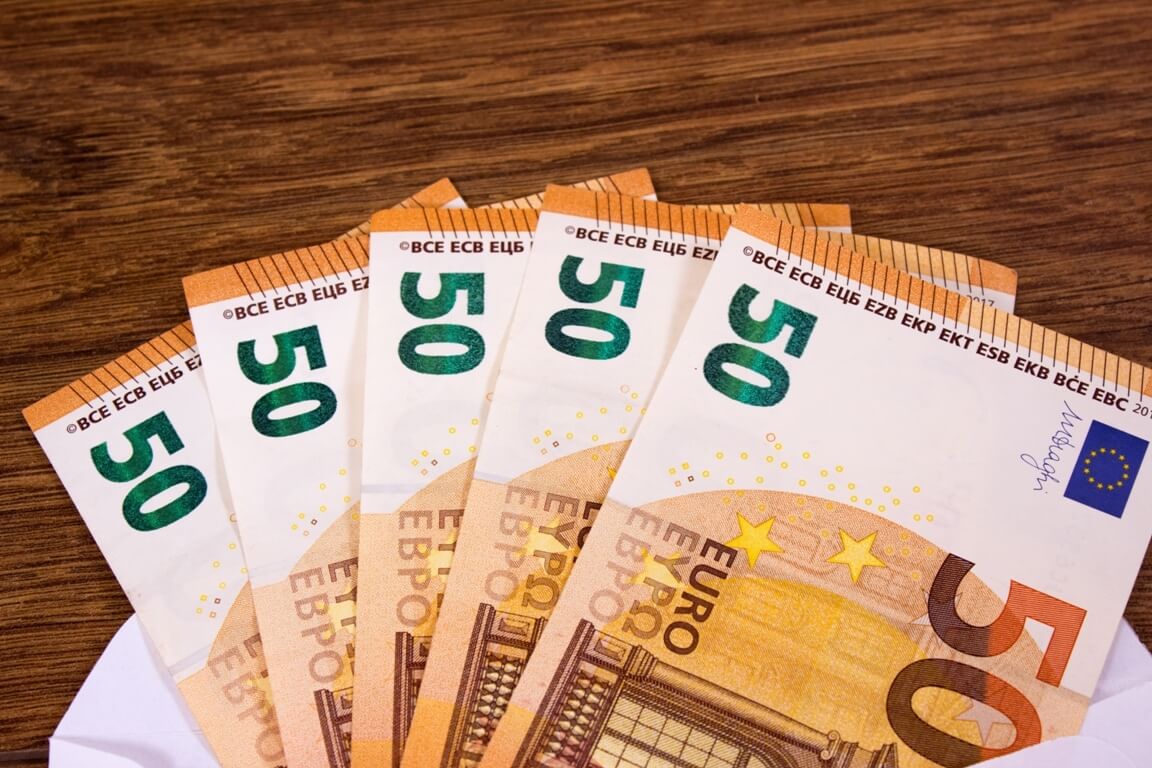
The euro fell against the U.S. dollar. What about the yen?
The U.S. dollar index exchanged hands at approximately 104 on Tuesday. It’s slightly lower compared to Friday’s six-week peak of 104.67. Thus far, the index has soared by almost 2% this month. It remains on track for its strongest monthly gains since the 3.2% rally in September.
In Europe, the common currency traded under pressure. New data reported that eurozone manufacturing activity shrunk in February. However, a recovery in the more inflation-sensitive services sector supported the economy, saving it from a greater decline.
The euro has been trading in the red versus the greenback over the past couple of weeks. U.S. labor data came out strong. At the same time, inflation remains high. Investors speculate that the Federal Reserve will continue rising interest rates to bring down inflation. The central bank doesn’t have to contend with the economic recession just now. The latter’s resilience gives the agency a chance to continue its aggressive policy.
It seems the eurozone is rebounding, as well. S&P Global’s index of Composite Purchasing Manager index for the euro area skyrocketed to its highest point in nine months. Traders gauge Europe’s economic health with this index. Tuesday’s survey showed that an index of service sector activity jumped to its highest level since June. On the other hand, manufacturing decreased at a sharper pace in February.
Jeremy Stretch, CIBC Capital Markets global head of currency strategy, noted that the manufacturing numbers disappointed the markets. However, the service numbers are quite good. He also pointed out that wage inflation usually lasts longer in the services sector. Thus, robust activity in this sector indicates that there’s a higher chance of the ECB hiking its interest rates. Such action would support the single currency.
How are the euro and sterling trading now?
The euro plummeted by 0.2% versus the USD at $1.0667 on Tuesday. In February, the currency shaved off almost 2% in value against the greenback. However, the euro soared by 1.4% against the Japanese yen.
Deutsche Bank strategist Jim Reid stated that the eurozone data has been positive of late. Still, analysts will have to assess the situation for the next few months to determine whether the economy is truly rebounding. Gas prices dropped significantly. That was a great improvement, but economists are waiting to see whether it’s enough to improve the situation.
Investors are also waiting for U.S. manufacturing data. It is due later Tuesday. The core personal consumption expenditures index will also come out on Friday. It could contain hints about the major central banks’ tightening policy this year.
The U.S. dollar climbed by 0.23% at 134.6 against the Japanese yen. Moreover, it added 0.4% to $0.68875 against the Aussie. Reserve Bank of Australia released its last meeting minutes. The bank seems prepared to continue the hikes. Despite this news, the Australian dollar declined today.
On the other hand, the British pound soared by 0.3%, rebounding against the greenback. It exchanged hands at $1.2071 at last. Furthermore, the sterling jumped by 0.5% versus the euro, hitting 88.36 pence. New data showed that U.K. business activity was much stronger than analysts expected in February.
What about the EM currencies?
On Tuesday, emerging market currencies were muted. EM stocks declined, though. The one-year anniversary of the Ukraine war brought a gloomy mood to markets. Traders also worried that China’s economic recovery wasn’t going as fast as expected.
Still, heavyweight China shares gained 0.3%. But Hong Kong stocks shaved off 1.7%. Goldman Sachs analysts noted that Chinese equities underperformed recently, reflecting traders’ doubts about the strength of China’s recovery.
Regional currencies index plummeted by 0.3% versus the firmer dollar. Russia’s rouble decreased by 0.2% against USD. Market participants are looking out for Putin’s speech. Russia’s president will speak at the precipice of the second year of his invasion of Ukraine. Meanwhile, U.S. President Joe Biden visited Kyiv. He promised to stand with the Ukrainian people for as long as it took.
China’s foreign minister Qin Gang announced that the country is deeply concerned that the Ukraine conflict might spiral out of control. He noted that certain countries should stop fueling the fire. That was a thinly veiled barb at the United States.
On Tuesday, Romania’s leu traded flat against the common currency. Investors waited for the central bank to release the minutes of its latest monetary policy meeting. However, Hungary’s forint plummeted by 0.4% versus the euro.




